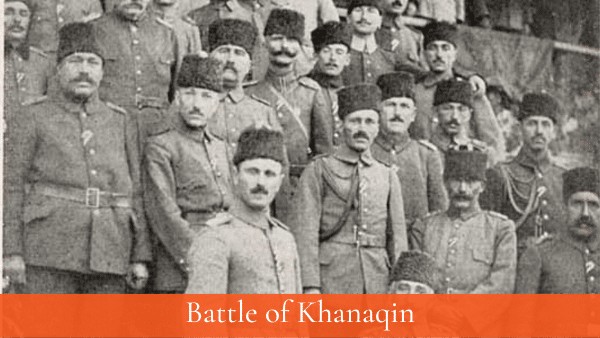The Battle of Khanaqin was the only engagement fought by the Russian Army on the Mesopotamian Front during World War I.

It saw a division under the command of Russian General Baratov cross the Mesopotamian border from western Persia to attack Turkish forces stationed at the border town of Khanaqin.
Jump to:
Prelude
Baratov's force had been involved in a lengthy campaign west of Tehran since the end of 1915. Until the arrival of Ali Ishan Bey's XIII Corps into the region in mid-1916, Baratov's division of 15,000 infantry troops and 7,500 cavalry had demonstrated steady success in driving rebel Persian and Arab forces towards the Mesopotamian border.
Early 1916 brought Baratov more rapid progress. On February 26, he secured control of Kermanshah and reached Kharind two weeks later, about 125 miles from Baghdad.
Given Baratov's progress, the British regional Commander-in-Chief, Sir John Nixon, hoped that the Russian force could help Sir Charles Townshend's besieged forces at Kut-al-Amara.
However, Baratov remained at Kharind for three months before unsuccessfully storming Turkish positions across the border at Khanaqin in June.
The Battle
In response, Baghdad commander Khalil Pasha dispatched Ishan's XIII Corps to drive the Russian force back from Khanaqin and prepare for a Turkish sweep through Persia to attack British rear positions.
Ishan succeeded in pushing back Baratov's division, but there were no major victories.
Turkish progress was slow but steady until Ishan was abruptly recalled to Baghdad in February 1917 to defend the city against a renewed British offensive led by new Commander-in-Chief Sir Frederick Stanley Maude.
By the time Ishan's forces arrived in Baghdad, the city had already fallen to the British. However, he used his forces effectively to harass Maude's forces during the subsequent British advance further north.
Baratov's force occupied Khanaqin once Ishan had left but finally retired to Kermanshah in June 1917 and played no further role in the war.
